5 Bee Friendly Perennials for Your Zone 3 Garden for Better Biodiversity
Adding bee friendly perennials will make your organic garden more hospitable to both native pollinators and honey bees and ensure that you can continue to harvest fruit and vegetables that need pollination over a long season. The key is to provide bee fodder throughout the growing season using perennials. From early in the spring, when the pussy willows emerge to well into the fall – when the native pollinators hibernate, perennials reliably offer honey bees and native pollinators what they need.
Benefits of growing bee friendly perennials
Growing bee friendly perennials makes less work for you, ensures an early start in the spring, just when the pollinators are coming out of hibernation, and brings pollinators to your garden before you need them to pollinate your berries and vegetables. These perennials attract more than just honeybees, too. Adding them to your garden will increase the biodiversity of native pollinators for better pest control and better vegetable and fruit crops.
These 5 bee friendly perennials will give you that extended blooming season by blossoming sequentially while the bees are actively foraging. Consider the bees, both wild pollinators and honeybees, as you are planning next year’s successful harvests.
These long-blooming perennials not only provide sweet pollen and nectar for bees and other pollinators, but they also provide medicinal benefits to the bees. Bees will forage them instinctively to relieve health challenges within the hive. These perennials also provide medicinal benefit to you, the gardener. So as you help the bees you help yourself.
If you have a small garden consider planting one or two of these perennial plants in a back corner or in a container and help out the bees. Some of them have miniature varieties that your garden store can help you with. If you have acreage, these can be planted in a hedgerow to feed both the bees and wildlife over many years.
Willow – an early blooming, medicinal
Willow is the first blossom to open in the spring. The pussy willows often emerge even before the snow is fully melted around the roots of the tree. Bees forage on the pollen at a time when there is little else in the landscape to feed them.
If you don’t have a willow growing nearby, plant an early willow-like Salix purpurea, ‘Green Dicks’, or Salix viminalis, shown in the picture. Plant it in the back corner of your garden and trim it to keep the roots contained. Willows shouldn’t be planted near septic fields, pipes, or building foundations, as willow roots seek water and may cause damage. Willows that are coppiced keep their roots in check.
If you have more space, plant a row of willows and coppice every second tree for basket-making materials, but leave a few rods to leaf out for the bees.
Early blooming Crabapple for pollinating apples and feeding the pollinators
Once the willows are finished blooming, crabapples are just opening. The Dolgo crabapple has an extended blooming season with an overwhelming show of blossoms. One tree is enough to cross-pollinate a dozen fruitful apple trees. You’ll find that a crabapple will be covered in both native bees and honeybees while they go between the crabapple and all the other nearby apple trees.
If you have a small garden, plant a crabapple on dwarf rootstock to keep the tree contained in a small space.

Berries that you may already be growing
After the apple blossom season, the native berries start to bloom. Strawberries, raspberries, haskaps, blueberries, thimbleberries, huckleberries, and blackberries overlap for much of June and July. This is the time when both honey bees and native pollinators are full and the hives are multiplying honey and brood.

Be careful picking the strawberries. You don’t want to accidentally pick a bee in the blossom next to the ripe fruit.
Bee Balm – Monarda offers showy blossoms and medicine for bees, butterflies, and other pollinators
Bee Balm is an excellent bee-friendly perennial flower in the mint family. It grows 18 to 20 inches high in a clump. It doesn’t spread by root runners in the same way that mint does.
Bee Balm begins to bloom in the middle of the berry season and continues until after a killing frost. I’ve noticed the trumpet blossoms covered in hoverflies, bumblebees, and butterflies in late August and early September. Many other flowers are finishing their display just as monarda really gets going.
Long blooming Elderberry – another medicinal plant for the pollinators
The elderberry is another shrubby perennial with medicinal virtues. The bees use it both nutritionally and medicinally. The shrubs have a long blooming period that begins in mid-July and continues until the frost. There will be ripe berries and white blossoms on the same plant. The umbel blossoms last for several days, while the pollinators visit each tiny floret around the cluster. Each one that is pollinated becomes single black elderberry. Where there are lots of pollinators there will be heavy clusters of fruit.
You’ll see wild elderberries in zone 3, along the highway right-of-ways flowering from mid-July till after the frost. If you have a small garden in zone 3, grow elderberry instead of grapes. You can use the fruit in juice and wine.
Late blooming Golden Rod is another medicinal, nectar and pollen flower
There are hundreds of different varieties of goldenrod available. They all have medicinal virtues and are rich in flavonoids. Bees forage them from the time the flowers open in mid-July to after a hard frost.
Garden centres have dwarf goldenrod that grows no more than 18 to 24 inches tall. Wild varieties grow up to 3 feet in height.
Goldenrod can be invasive, as the root crown sends up more stems each year. You can divide a plant in the spring by dividing the root with a sharp shovel blade. If you have a small garden, keep the size of the plant manageable by dividing the root in the Spring. Share the extras with neighbours to add more nectar and pollen sources in your community. But if you have ample space, add a goldenrod to the front of a hedgerow. Goldenrod is medicinal as well as being an excellent source for yellow natural dye.
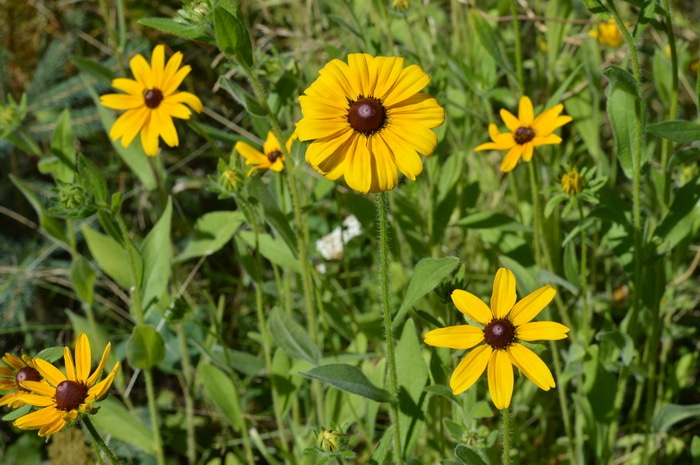
Wild Flowers
Wild Flowers are one of the best food sources for wild pollinators. Many, like perennial lupines, are hardy in zone 3. Look for wildflowers that are native to your area. Native plant nurseries are excellent sources of perennial native plants that will feed the native pollinators in the shoulder seasons. Remember when planting for pollinators to provide large swathes of a single species.
Plant a perennial for the bees
As you are planning your spring garden, remember to plant bee-friendly perennials for better pollination and increased biodiversity. These 5 perennials offer benefits to you and the pollinators. They aren’t the only options though. Consider comfrey, echinacea, oregano, lavender, mint, lemon balm, and many other medicinal herbs that are beneficial to both you and the bees. It’s a win-win when you plant for the bees.


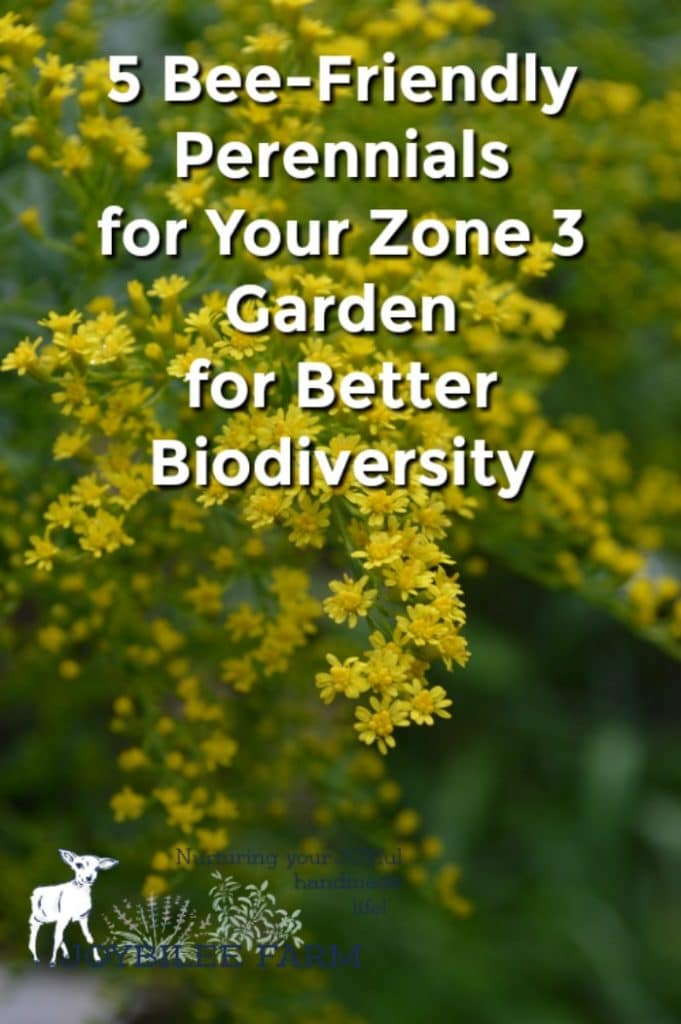

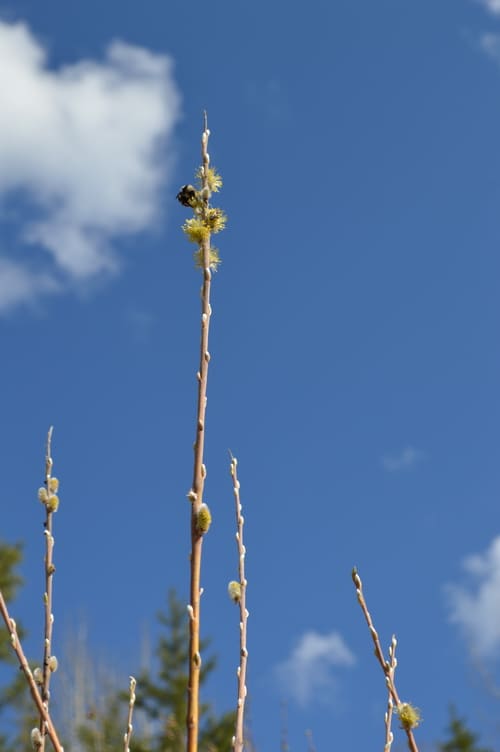
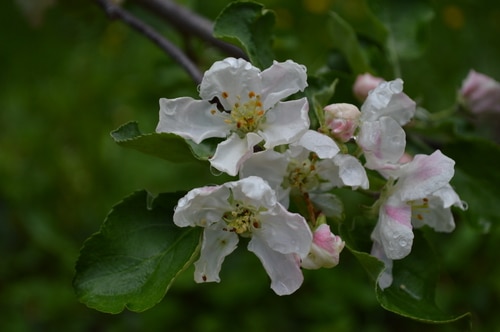
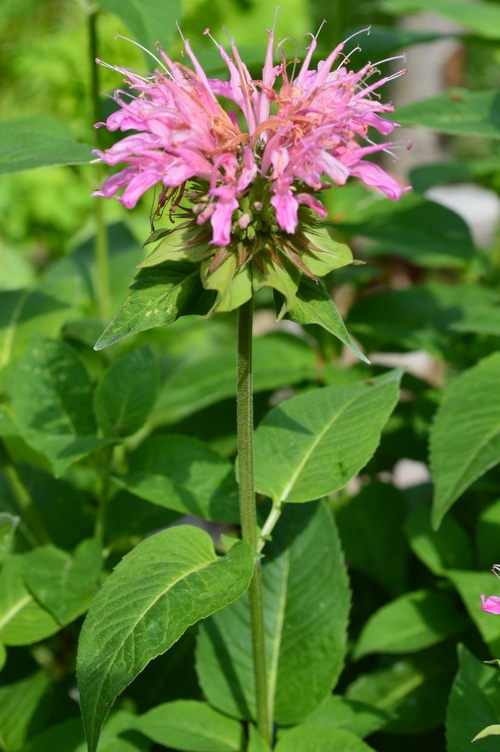
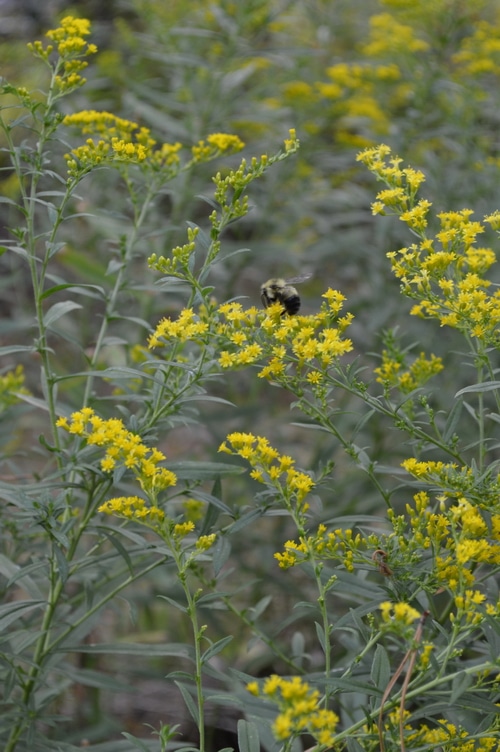

Leave a Reply